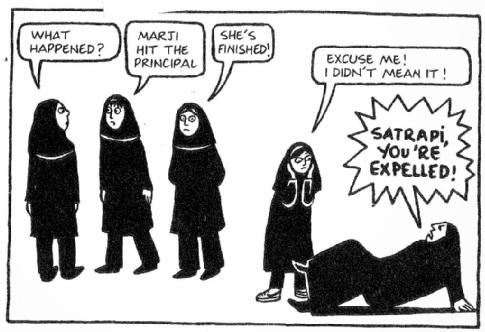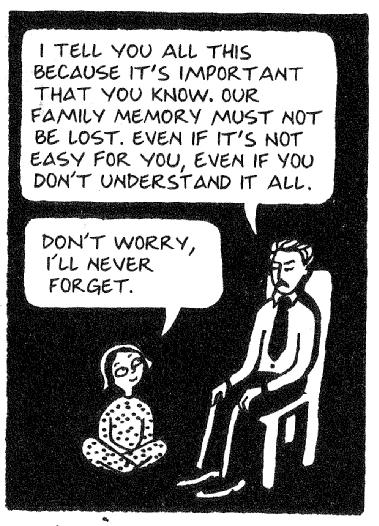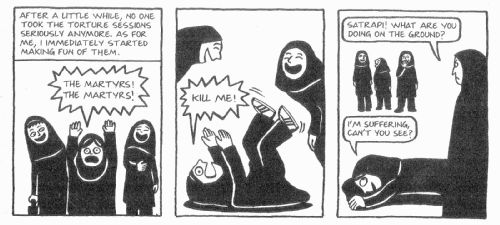Close Reading
Persepolis
The story is a bildungsroman and it starts shortly before the Iranian Revolution of the 1979, by showing through Marjane’s eyes, who, at the beginning of the story, is nine years old. According to her children's eyes, the hopes of change of the people were slowly broken when the islamic fundamentalists took the power. They forced the women to cover their heads and reduced the freedom of the population and by jailing thousands of people.
At the end of the story Marjane is twenty-two years old and she expatriated.
An Islamic law called “Sharia” obliged people to follow several duties and rules. According to Islamic people, it was the moral code and religious law which must be applied in countries. In its strictest and most historically coherent definition it is considered as the infallible law of God.
The origin of sharia is the Qu’ran, and traditions from the life of the Islamic Prophet Muhammad. There are two sources of sharia law: the precepts set forth in the Quranic verses, and the example set by the Islamic prophet Muhammad in the Sunnah.
The Quran is considered as the unalterable word of God. Quran, in the eyes of Muslim people, want them to abide by the rules of certain moral values. The Sunnah's importance as a source of Sharia, is confirmed by several verses of the Quran.
The word sharia is an archaic Arabic word denoting “pathway to be followed”, or “path to the water hole”. This latter definition comes from the idea that the path to water is the whole way of life in an arid desert environment.
The etymology of sharia as a “path” or “way” is confirmed by the Quranic verse: “Then we put thee on the (right) Way of religion so follow thou that (Way), and follow not the desires of those who know not.”
The bildungsroman (from the German) is a literary genre about the evolution of the character towards the maturity by growing-up, as well as its historic origin.
The purpose of the bildungsroman is to express emotions, feelings, projects, deeds which are deeply anchored in people's mind and heart.
Persepolis embodies perfectly this kind of narration because the writer, Marjiane Satrapi, tries to evoke a lot of feelings in the telling-story. The way in which this little girl is brought up by a bourgeois educated family with libertarian ideals within a town where a lot of prohibitions were imposed by the government.
In fact, the writer chooses to set up a black and white graphic novel in order to impress the spectator combining this style with tragedy and humour.
Satrapi emulates a visual style of high-contrast inking in the sections of the historical narrative with the black background in the novel which suggests a tragedy scene. Instead of the present-day frame story provides the idea of humour, emphasized with the white background.


